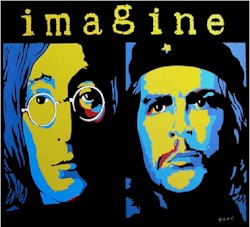Wednesday, March 05, 2008
Laptop "evidence" and dirty bombs
The "evidence" that Iran is interested in producing a nuclear bomb rests largely on alleged documents found on a laptop computer. Now the threat of war looms in South America, and as part of hyping that threat and making sure we understand it's all in the name of "fighting terrorism" we're told that plans found on a FARC laptop computer show they were planning to make a "dirty bomb" with 50 kg of uranium. There's just one problem. We learned back in 2004, in the case of Jose Padilla, that you cannot make a dirty bomb with uranium:
But uranium's extremely low radioactivity is harmless compared with high-radiation materials, such as cesium and cobalt isotopes used in medicine and industry that experts see as potential fuel for dirty bombs.Here's the problem. I checked articles from The New York Times, the Miami Herald, Reuters, and even the Guardian, and not one of them mentioned the fact that uranium can't be used to make a dirty bomb. All simply repeated the charges made by Colombia.
"I used a 20-pound brick of uranium as a doorstop in my office," American nuclear physicist Peter D. Zimmerman, of King's College in London, said to illustrate the point.
Zimmerman, co-author of an expert analysis of dirty bombs for the U.S. National Defense University, said last week's government announcement was "extremely disturbing, because you cannot make a radiological dispersal device with uranium. There is just no significant radiation hazard."
Other specialists agreed. "It's the equivalent of blowing up lead," said physicist Ivan Oelrich of the Federation of American Scientists.



